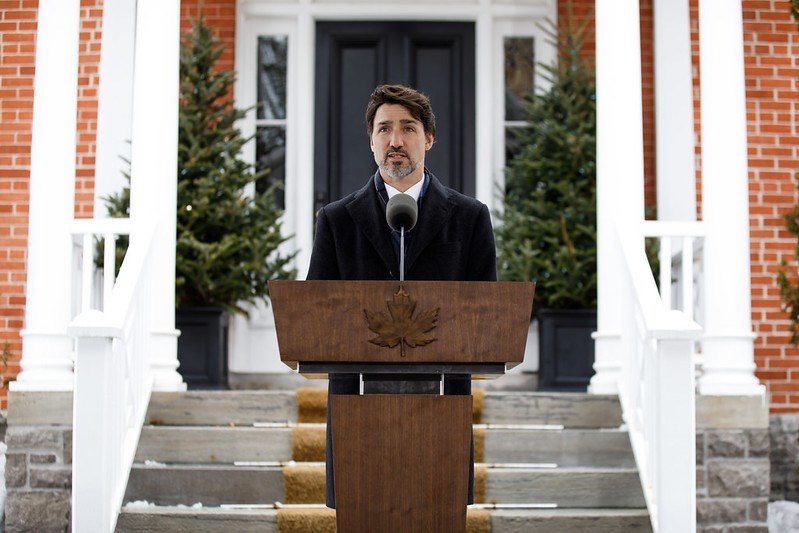Businesses can expect payments for the federal government’s wage subsidy program to arrive beginning May 7, according to Prime Minister Justin Trudeau.
Monday (April 27) marks the launch of the Canadian Emergency Wage Subsidy program, which covers 75% of the first $58,700 an employee earns.
The $73-billion initiative is open to companies that can demonstrate a 15% revenue decline in March compared with a year earlier, or else 30% annual revenue declines in April or May.
About 10,000 businesses had applied for the program within five hours of launching at 3 a.m. PT, Trudeau said during his daily media briefing in Ottawa.
The subsidy is not available to workers already receiving the $2,000 monthly Canadian Emergency Response Benefit (CERB) in the wake of being laid off or losing income during the pandemic.
But because the wage subsidy is retroactive to March 15, it’s possible Canadians, not knowing if they would benefit from the wage subsidy payments, already applied for and began receiving the CERB.
“In that case they will have to, over the course of the coming months, pay one of them back. So people should keep that in mind, that if you’re getting both you should probably set one of them aside so that you can pay that back and you don’t get overly challenged with that down the road,” Trudeau said.
He said it’s most likely recipients will have to repay the CERB if they are currently benefitting from both programs.
“The government agencies have a clear record of who gets what that will obviously help in sorting this out in the coming months,” the prime minister said.
“The CERB is coming up on a reapplication [cycle] and if people are receiving that wage subsidy, they shouldn’t reapply for the CERB.”
Meanwhile, Trudeau said he expects a shared set of guidelines between Ottawa and the provinces to be released in the coming days to help inform decision-makers regarding the reopening of provincial economies.
The guidelines are being developed as Ontario and Quebec prepare to unveil their own plans.
“The provinces have the authority to determine what’s in their best interests. It’s not up to the federal government to check or oversee the provinces in their areas of jurisdiction and much of this falls within their areas of jurisdiction,” he said.
“But they have the responsibility to do what is right for their citizens. Every province is in different situations — regions within the provinces are in different situations — and I have confidence in the premiers of the provinces and the territories to move forward in a way that is right for them.”
While the guidelines have not yet been released, the prime minister said that they’re already informing the way decision-makers are thinking about reopening their economies.
B.C. Finance Minister Carole James provided more details on commercial rent relief for eligible small businesses on Friday, with Victoria offering $80 million out of the $300 million earmarked for the province.
The commercial rent relief program comes in addition to the province offering $300-$500 in residential rent relief for eligible applicants.
However, Trudeau signalled on Monday the federal government will not be offering similar benefits.
“If provinces … want to move forward with more help for residential rent, they can of course do that,” he said, noting other federal benefits such as the CERB could be used by recipients to help with residential rent.
“Small businesses needed extra support for their commercial rents on top of the wage subsidy and that’s what we’ve done.”



